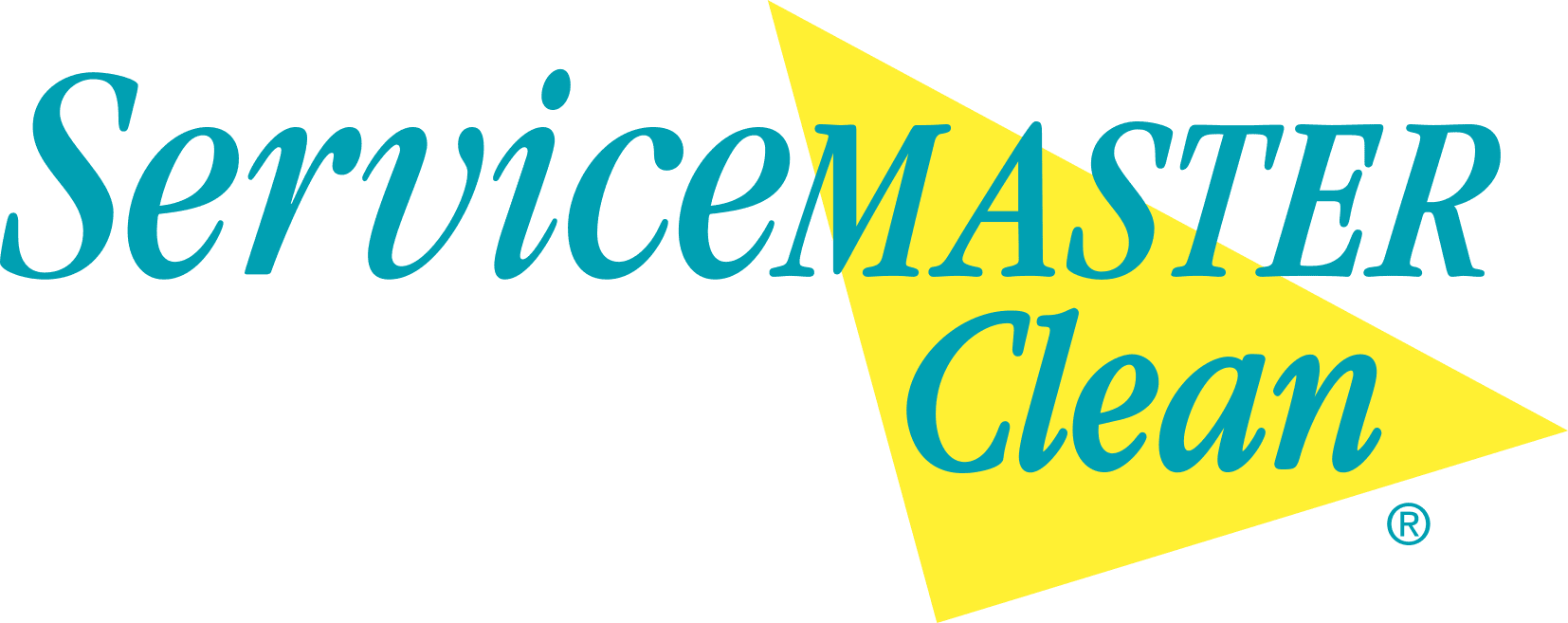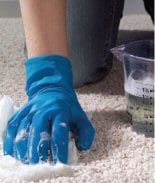Spot Removal Technique
Daily removal of spots and spills helps maintain the carpet’s appearance between scheduled cleanings. Immediate action against spots and spills also reduces the probability of a permanent stain. It is important to use solutions that are appropriate for the specific type of spot or spill – water based, oil based, or solid, including gum. Use spotting solutions sparingly and always try to remove the spot with water only before using a spotting solution. If available, using a portable extractor will significantly improve the ability to remove spots.
Treating Water-Based Spots
For liquid spills, blot up as much of the liquid as possible with a clean white cloth. If the spill is semi-solid or has hardened, scrape it with a spoon or spatula and then blot the spot with a white cloth or damp sponge. Always work from the edge of the spot towards the center. Never rub across a wet spill in a manner that causes the stain or contamination to be spread from the original area. If a spot remains after using water, refer to our spotting guide and choose the appropriate solution. Apply a minimal amount of solution and use a hand brush to gently agitate the solution. Do not aggressively brush the spot. Rinse with water and allow the area to dry for about 1 hour and then vacuum. Repeat if necessary. Protect the freshly cleaned area until the carpet is completely dry.
Treating Oil-Based Spots
When removing oily stains such as paint, grease, tar or asphalt, always check for color fastness by applying your cleaning solution to an inconspicuous area of the carpet. Spray or pour the solvent onto a white cloth and press it onto the carpet. Check the cloth for any evidence of dye transfer to the cloth. If color transfer is evident, do not use the solution. If color fastness is not a problem, apply your solution sparingly to a clean white cloth and press the cloth onto the spot. Again, do not rub across the stain; wipe gently from the outer edge toward the center of the spot. Repeat the procedure until the spot has been removed. Rinse with water and allow the area to dry or about 1 hour and then vacuum. Protect the freshly cleaned area until the carpet is completely dry.
NOTE: HAVING A SMALL EXTRACTOR MACHINE HANDY ALWAYS MAKES IT EASIER TO FLUSH A SPOT AND REMOVE EXCESS MOISTURE. SPILL. IF A STAIN CANNOT BE REMOVED, PLEASE CONSULT A CARPET CLEANING PROFESSIONAL
Source: the Carpet Maintenance Spec Guide, from Interfaceflor.





